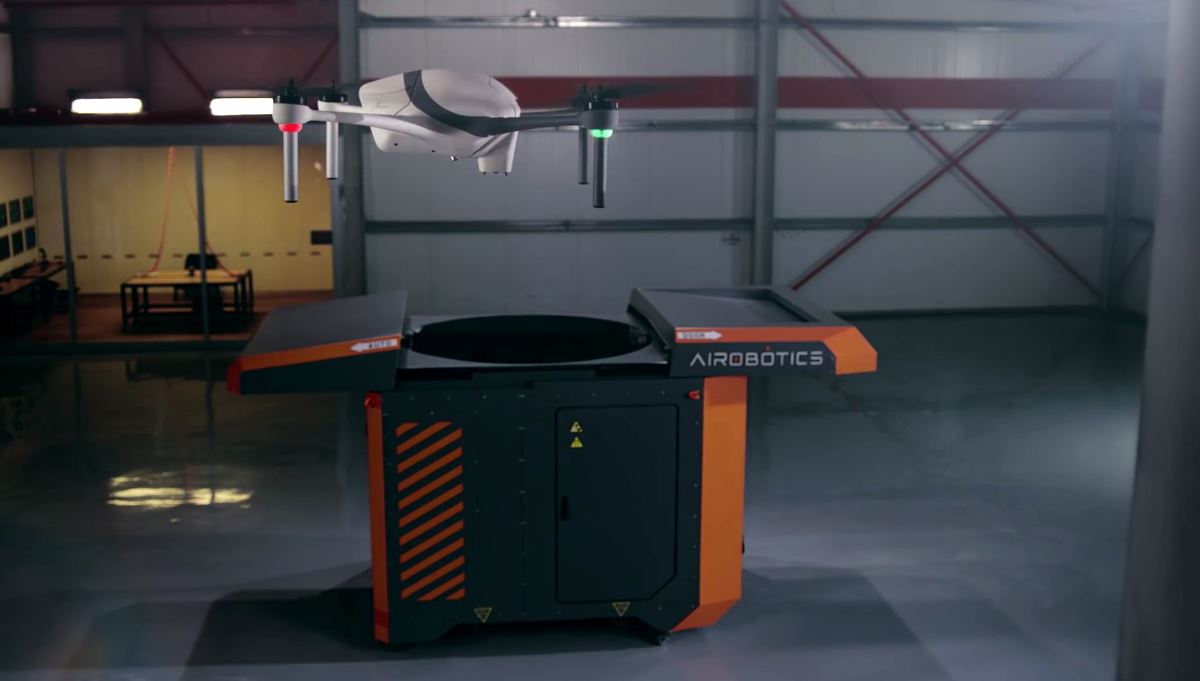Flying a drone autonomously without a pilot is what many companies are focused on in the short and long term. Removing the pilot can change how an organization looks at drone adoption, and that’s just part of the reason companies like Airobotics have dedicated themselves to provide an end-to-end, fully automatic drone solution. Recent news about their company being granted with the authorization to fly fully automated drones without a pilot puts them in an incredible position to define what that kind of operation can look like for professionals across the world.
We’ve previously discussed how regulation is impacting the way Airobotics is moving forward with CEO Ran Krauss while also exploring where automation and the digital mining environment meet, both of which showcase how important of a consideration regulation has been for the company. The company designed how they wanted to approach beyond visual line of sight (BVLOS) operation back in 2013, but they just finished development of that system and process after working together with the Civil Aviation Authority of Israel (CAAI) to prove the system’s safety case.Last month, after passing all the tests, CAAI granted Airobotics the first certification in the world to fly fully automated drones without a pilot. This opens up new, innovative and revolutionary ways of performing BVLOS operations. As Airobotics points out, the system will help with different issues in the drone industry, such as high costs of labor, increased logistics around drone operations, expensive and lengthy training of aircrew as well as enabling customers that are not drone experts to perform highly complex drone missions.Airobotics’ CEO Ran Krauss said: “Airobotics has completed a long cycle, which started in 2013. This newly granted certification is our next generation milestone, that completely takes the human drone pilot out of the equation in BVLOS operations. We predict this certification milestone will revolutionize the global market landscape, and pave the way for future applications of automated drones.”The platform consists of three distinct pieces. There’s the drone, called the Optimus, which flies for 30 minutes while carrying a one-kilogram payload. There’s also an automated base station for the drone to land, take-off from and can swap batteries by themselves. Finally, Airobotics Software enables users to control and manage missions with one click. In the video below, you’ll see how everything works.Intel in Israel and Israel Chemicals were important first customers for Airobotics as they allowed the company to test the system on their facilities. South 32, a mining company in Australia, is already working with it to capture data and insights across the Worsley Alumina operations in a 3D digital environment.Airobotics is now looking to expand the operations worldwide, starting in Australia and in the US. It already owns a commercial license from the Civil Aviation Safety Authority (CASA) and an FAA waiver authorization under Part 107.Subscribe
The information you submit will be stored and used to communicate with you about your interest in Commercial UAV News. To understand more about how we use and store information, please refer to our privacy policy.
April 4, 2017
Airobotics Looks to Define What It Means to Fly a Drone BVLOS
















Comments